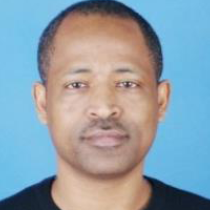
Isayiyas T. Nigatu
Work place: Jimma Institute of Technology /Electrical and Computer Engineering, Jimma, Ethiopia
E-mail: isayiyas.tiba@ju.edu.et
Website: https://orcid.org/0000-0002-0606-2558
Research Interests:
Biography
Isayiyas Nigatu Tiba earned his Ph.D. in Information and Communications Engineering from Xidian University, Xi’an, China, in 2021. His doctoral research focused on a design of massive MIMO detectors via deep learning, contributing significantly to the applications AI to the physical layer communication. He is currently an Assistant Professor of Electrical and Computer Engineering. Currently, he serves as an Assistant Professor of Electrical and Computer Engineering at the Jimma University Institute of Technology in Jimma, Ethiopia. In this role, Dr. Isayiyas is dedicated to advancing the field of electrical and computer engineering through innovative teaching methods and cutting-edge research. His areas of expertise include wireless communications, Signal Processing for Communication Systems, and applications of Deep Learning for Wireless Communications, and he is actively involved in 2 active projects.
Author Articles
Metamaterial Inspired Millimeter-Wave Antenna Arrays for 5G Wireless Applications
By Moti G. Beyene Isayiyas T. Nigatu
DOI: https://doi.org/10.5815/ijwmt.2025.01.03, Pub. Date: 8 Feb. 2025
Fifth-generation (5G) wireless communication systems employ millimeter-wave (mm-wave) frequency bands to achieve a very broad spectrum for high data rate transmission. To meet the system requirements, the best design of antenna arrays with superior performance is essential. Thus, in this paper, the design and performance analysis of single element, 2 x 1, and 4 x 1 metamaterial inspired millimeter-wave antenna (MIA) arrays are proposed. The antenna elements are designed using Rogers’ 5880 as a substrate material with a 2.2 dielectric constant and thickness of 0.35 mm to operate at a center frequency of 38 GHz. The simulated design of the single, 2 x 1, and 4 x 1 MIA arrays return loss, bandwidth, gain, voltage standing wave ratio (VSWR), and total efficiency are: -82.95 dB, -67.1 dB, -69.12 dB; 1.971 GHz, 2.278 GHz, 4.704 GHz; 7.36 dBi, 9.11 dBi, 11.4 dBi; 1.001432, 1.0009, 1.0007; and 95.55 %, 94.01 %, 95.87. As compared to other works, improved performance has been achieved by considering the effect of meta-materials on the radiator and at the ground of microstrip patch antennas (MPA). The selected type of meta-materials alters the current distribution of the radiating patch that enhances the fringing fields at the edge of MPAs, which inspires the radiation of antennas and reduces the surface wave loss at the radiators’ ground plane. The proposed MIA antenna arrays have improved upon the drawbacks of traditional MPAs and fulfill the requirements of 5G communication systems.
[...] Read more.Other Articles
Subscribe to receive issue release notifications and newsletters from MECS Press journals